Tetrabromobisphenol A
Synonym(s):4,4′-Isopropylidenebis(2,6-dibromophenol);TBBPA
- CAS NO.:79-94-7
- Empirical Formula: C15H12Br4O2
- Molecular Weight: 543.87
- MDL number: MFCD00013962
- EINECS: 201-236-9
- SAFETY DATA SHEET (SDS)
- Update Date: 2025-09-25 17:15:13
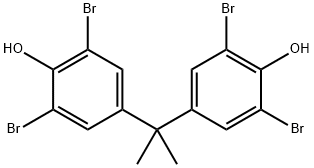
What is Tetrabromobisphenol A?
Chemical properties
Tetrabromobisphenol A is a white to pale cream or pale yellow crystalline with a moderately high molecular weight, low water solubility, and moderately high lipophilicity (as indicated by log Kow). Only about 4% of the particles are <15 μm in diameter, and thus, little (<4%) is expected to be respirable (<10 μm in diameter) and absorbed from the lung after inhalation exposure.
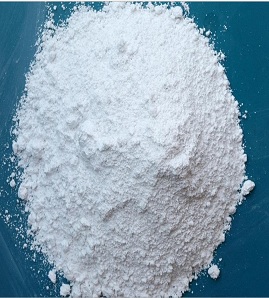
Tetrabromobisphenol A (TBBPA) is a brominated flame retardant used in a variety of reactive and additive applications. It is reacted (i.e., covalently bound) with epoxy, vinyl esters, and polycarbonate systems (e.g., high impact polystyrene (HIPS), and is used as an additive in acrylonitrile-butadiene-styrene (ABS) thermoplastic resins (Albemarle, 1999). Its primary application is in printed wire boards (PWBs) as a reactive flame retardant (BSEF, 2012).
The Uses of Tetrabromobisphenol A
tetrabromobisphenol A is widely used as a reactive flame retardant to produce a bromine-containing epoxy resin and polycarbonate, and as intermediates for the synthesis of other complex flame retardant, also as an additive flame retardant for ABS, HIPS, unsaturated polyester rigid polyurethane foams, adhesives and coatings.
Definition
ChEBI: Tetrabromobisphenol A is a bromobisphenol that is 4,4'-methanediyldiphenol in which the methylene hydrogens are replaced by two methyl groups and the phenyl rings are substituted by bromo groups at positions 2, 2', 6 and 6'. It is a brominated flame retardant. It is a brominated flame retardant and a bromobisphenol. It is functionally related to a bisphenol A.
Preparation
Tetrabromobisphenol A is prepared by the bromination of bisphenol A in the presence of a solvent. This reaction may be conducted:
in the presence of a hydrocarbon solvent only or
with water, 50 % hydrobromic acid or aqueous alkyl monoethers.
when methanol is used as the solvent, methyl bromide is formed as a by-product. The production process is largely conducted in closed systems (WHO/IPCS, 1995).
What are the applications of Application
The main use of TBBPA is as a reactive flame retardant in epoxy resins for printed circuit boards in computers, telecommunications equipment, industrial controls and automotive electronics. Both hydroxyl groups on TBBPA can be reacted with epichlorohydrin under basic conditions to form the diglycidyl ether, which is widely used in epoxy resin formulations. TBBPA is also used in polycarbonate and ether polyester resins and is used as a chemical intermediate for the synthesis of tetra-bromobisphenol A allyl ether, -bis(2-hydroxyethyl ether), -carbonate oligomer, and -diglycidyl ether. TBBPA is also used as a flame retardant in plastics, paper, and textiles, and as a plasticizer in adhesives and coatings. Being covalently bound to the polymer limits exposure to unbound excess chemical used in the manufacturing process.
General Description
White powder. A monomer for flame-retardant epoxy, polyester and polycarboante resins.
Air & Water Reactions
Insoluble in water.
Reactivity Profile
Tetrabromobisphenol A is monomer.
Hazard
Moderately toxic by inhalation and skincontact. An eye irritant.
Fire Hazard
Tetrabromobisphenol A is nonflammable.
Flammability and Explosibility
Non flammable
Environmental Fate
Its physicochemical properties suggest that it will partition to all compartments (i.e., water, sediment, and soil), predominantly to sediment and soil through binding to the organic fraction of a particulate matter. Available environmental fate studies indicated that TBBPA is persistent in water (half-life [t1/2] 182 days), soil (t1/2 182 days), and sediment (t1/2 365 days) (Canada, 2013).It lacks functional groups that are expected to undergo hydrolysis (Canada, 2013). A number of laboratory studies (ECHA, 2013) showed that it can degrade to bisphenol A under aerobic conditions (Canada, 2013).
Tetrabromobisphenol A is identified as a persistent, bioaccumulative, and toxic (PBT) compound under the U.S. Environmental Protection Agency s Toxic Release Inventory (EPA, 2013). It was also placed on the State of Washington s Department of Ecology s PBT List (DOC, 2013). However, Environment Canada and Health Canada concluded that TBBPA did not meet their criteria for bioaccumulation (i.e., bioaccumulation factor >5000) (Canada, 2013). This conclusion was based on TBBPA s low bioaccumulation potential from its physicochemical properties (e.g., maximum diameter of 1.3 1.4 nm, ionization at environmentally relevant pH, and variable logKOW), as well as from studies that showed TBBPA is rapidly metabolized and excreted in aquatic and terrestrial organisms (Canada, 2013).
Toxicity evaluation
Tetrabromobisphenol A (TBBPA) is a brominated flame retardant that has been associated with kidney toxicity in newborn rats. TBBPA is similar in structure to the thyroid hormone T4 and has been found to compete with T4 in binding to proteins in the blood which reduce overall blood serum levels of thyroid hormones.
Tetrabromobisphenol A is classified as hazard statements (H) H400/H410, which means that it is toxic to aquatic biota, causing long-term changes in these organisms.
TBBPA is included on Washington State's PBT (Persistent, Bioaccumulative and Toxic) Rule of chemicals.
TBBPA is on the Proposition 65 list because it can cause cancer.
A National Toxicology Program two-year bioassay study reported that there was clear cancer development in female rats that were exposed to TBBPA, and some evidence in male mice.
Properties of Tetrabromobisphenol A
| Melting point: | 178-181 °C(lit.) |
| Boiling point: | 316 °C |
| Density | 2.1 |
| vapor pressure | 0Pa at 20℃ |
| refractive index | 1.5000 (estimate) |
| storage temp. | 2-8°C |
| solubility | Insoluble |
| form | neat |
| pka | 8.50±0.10(Predicted) |
| color | White to Almost white |
| Water Solubility | Insoluble |
| BRN | 1889048 |
| CAS DataBase Reference | 79-94-7(CAS DataBase Reference) |
| IARC | 2A (Vol. 115) 2018 |
| NIST Chemistry Reference | Phenol, 4,4'-(2,2-propanediyl) bis[2,6-dibromo]-(79-94-7) |
| EPA Substance Registry System | Tetrabromobisphenol A (79-94-7) |
Safety information for Tetrabromobisphenol A
| Signal word | Warning |
| Pictogram(s) |
 Environment GHS09 |
| GHS Hazard Statements |
H410:Hazardous to the aquatic environment, long-term hazard |
| Precautionary Statement Codes |
P273:Avoid release to the environment. P501:Dispose of contents/container to..… |
Computed Descriptors for Tetrabromobisphenol A
Tetrabromobisphenol A manufacturer
New Products
4,4-Difluoropiperidine hydrochloride tert-butyl 9-methoxy-3-azaspiro[5.5]undecane-3-carboxylate Indole Methyl Resin N-Isopropylurea N,N-Dicyclohexylcarbodiimide(DCC) MELDRUMS ACID 5-METHYLISOXAZOLE-4-CARBOXYLIC ACID Magnessium Bis glycinate Zinc ascorbate 1-bromo-2-butyne 2-acetamidophenol 9(10H)-anthracenone Erythrosin B, 4-Piperidinopiperidine 2-((4-morpholinophenylamino) (methylthio) methylene) malononitrile 2,4-dihydroxybenzaldehyde 3-(4-morpholinophenylamino)-5-amino-1H-pyrazole-4-carbonitrile Methyl 2-methylquinoline-6-carboxylate 2,6-dichloro-4-nitropyridine 4-Bromo-2-chlorobenzonitrile 2-(benzylamino)acetic acid hydrochloride 4-(tert-Butoxycarbonylamino)but- 2-ynoic acid 3,4-dihydro-2H-benzo[b][1,4]dioxepine 1-Phenyl-1-cycloprppanecarboxylicacidRelated products of tetrahydrofuran


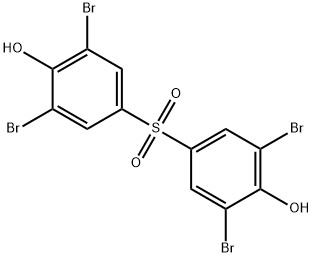
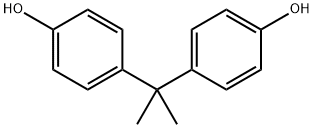



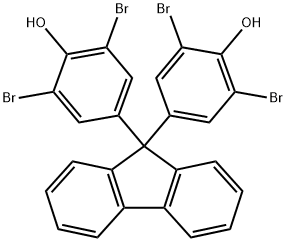
You may like
-
 79-94-7 Tetrabromobisphenol-A 98%View Details
79-94-7 Tetrabromobisphenol-A 98%View Details
79-94-7 -
 Tetrabromobisphenol A CAS 79-94-7View Details
Tetrabromobisphenol A CAS 79-94-7View Details
79-94-7 -
 3,3′,5,5′-Tetrabromobisphenol A, 97% CAS 79-94-7View Details
3,3′,5,5′-Tetrabromobisphenol A, 97% CAS 79-94-7View Details
79-94-7 -
 Tetrabromobisphenol A 98% CAS 79-94-7View Details
Tetrabromobisphenol A 98% CAS 79-94-7View Details
79-94-7 -
 3,3′,5,5′-Tetrabromobisphenol A CAS 79-94-7View Details
3,3′,5,5′-Tetrabromobisphenol A CAS 79-94-7View Details
79-94-7 -
 3,3′,5,5′-Tetrabromobisphenol A CAS 79-94-7View Details
3,3′,5,5′-Tetrabromobisphenol A CAS 79-94-7View Details
79-94-7 -
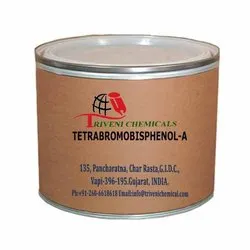 Tetrabromobisphenol-AView Details
Tetrabromobisphenol-AView Details
79-94-7 -
 Tetrabromobisphenol A PowderView Details
Tetrabromobisphenol A PowderView Details
79-94-7
